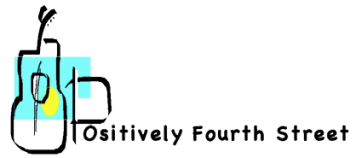
The Metamorphosis of a Building, or the strange and sometimes creepy history of Positively Fourth Street
The warehouse was originally built in 1904 by the infamous Armour and Company, an American slaughterhouse and meatpacking plant founded in Chicago in 1867. Back then, Armour was Chicago’s most important and successful business that sold every kind of consumer products made from animals. They were notorious for paying their workers low wages. They fought unionization and broke up strikes in 1904 and 1921 by employing African Americans and new immigrants. At one point, Armour sold over 700 cases of rotten meat to the American military causing food poisoning in thousands of soldiers. In the early 1920s, Armour was in financial trouble and the family sold its majority interest. In 1948 Armour, which made soap for years created a new deodorant soap they named “Dial”. Can you say: “Aren’t you glad you use Dial?”
But after World War II, Armour’s fortune began to decline, and in 1959, it closed its Chicago slaughterhouse operations.
Today, the old smoker rooms still exist in the lower belly of Positively Fourth Street, and a fine tuned nose might still catch a whiff of the bovines and pigs smoked so long ago. The plant was primarily used as a processing plant and it did not include the slaughtering of animals. And if you ever have wondered why the building is adorned with a smokestack, now you know.

On July 11, 1915, the Liberty Bell was paraded in front of our building what is now Positively Fourth Street.

And the business apparently was quite successful for many years, but by 1957 the owner ran into some problems with the IRS. He left the country, lost the business and the building subsequently was auctioned off.


Salt Lake Tribune article from April 13, 1980
New life was given to the building when it changed hands again. The new owner subdivided some of the space and rented it to artists, thinking it could branch out from the Pierpont Artspace that was started in 1979 and was doing quite well. Some of the first tenants were artists followed by heavy metal bands; and the artists, not being able to contemplate art during jamming sessions, moved out! Seeing diminished revenues and a need to bring the building up to city code, the owner quit claimed the building back to Wagner, whose much younger wife took over and brought the building up to code. She formed a successful alliance with Smyth & Associates and together they have been instrumental in keeping the place running for the benefit of Salt Lake City’s young musicians.
Today Positively Fourth Street in Salt Lake City is a vibrant and well-established practice space for bands. The mix of ghosts past and the energy of young and innovative talents bring forth a uniqueness that is unparalleled in today’s music scene.
POSITIVELY 4TH STREET AND TRIBUTE TO BOB DYLAN




Demolition of the 4th South viaduct around 1997. The bridge was built in
1971 to the tune of $2,5 million! The photo on the right was taken over 100 years ago (7/11/1915) when the Liberty Bell arrived in Salt Lake City at Pioneer Park and 30,000 Utah school children were the first allowed to pass by the bell, right in front of today's Positively Fourth Street band rehearsal building.

